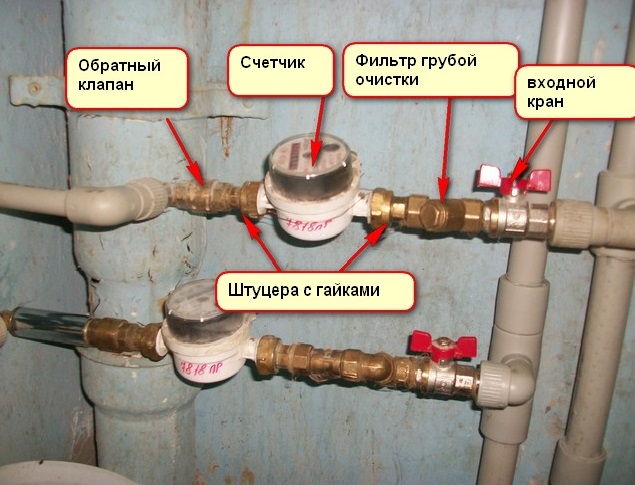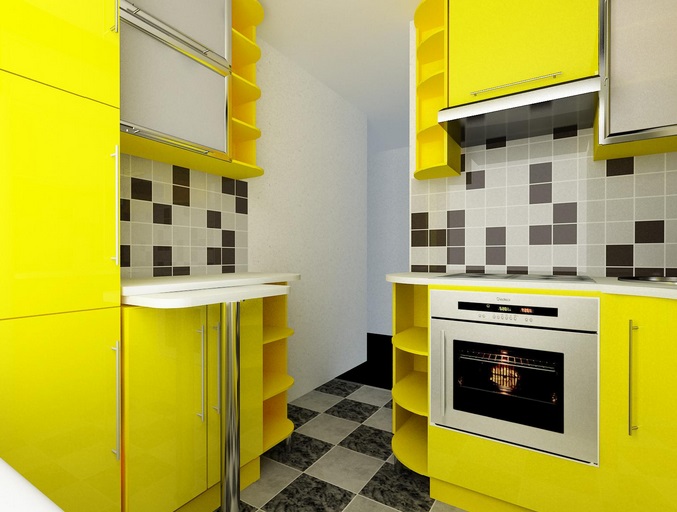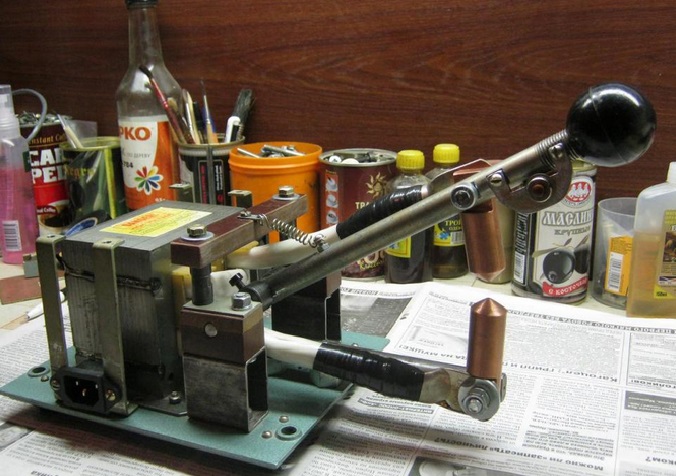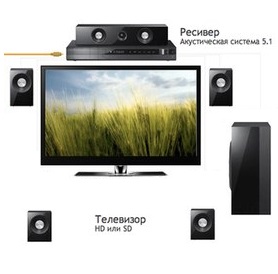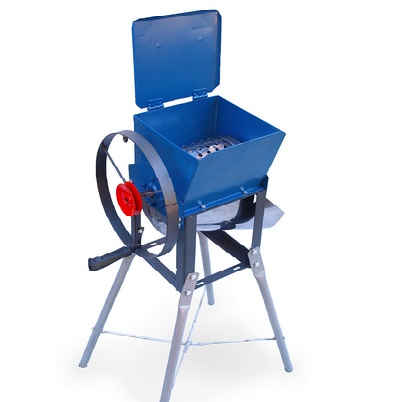Traditionally, the cold season, particularly the transitional periods, marks the time for purchasing electric heaters. There are various types of electric heaters, serving as either primary or supplementary heating for residential rooms. However, before buying, it’s crucial to understand the differences and benefits of oil-filled radiators and convectors, as these heating sources are not cheap.
What is the Most Efficient Heater?
The efficiency of heaters depends on several factors, such as the size of the room to be heated, the energy source used, and the efficiency of heat transfer, among others.
Fan heaters are among the most efficient types of heaters. They use the convection process to heat the air in the room and distribute it evenly.
Infrared heaters, which use infrared rays to heat objects in the room while keeping the air cool, are also worth considering.
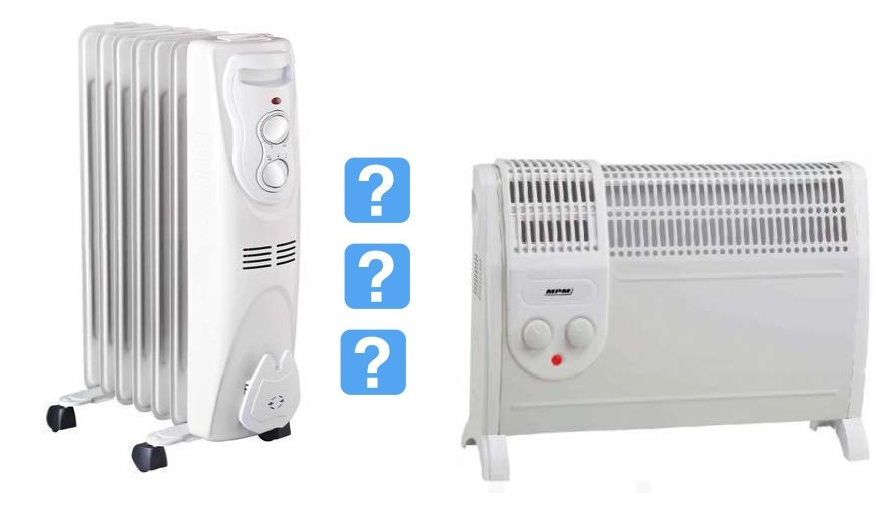
Types of Household Heaters
- Oil-filled radiators;
- Electric convectors;
- Fan heaters;
Heaters – Infrared Emitters
Each of these appliances has its own set of technical features, advantages, and disadvantages. However, all electrically powered heaters share some common benefits:
- Relative affordability;
- Safety;
- Easy installation and no need for mounting;
- Eco-friendliness;
- Simple control of operation and room temperature.
The Most Popular Radiators – Oil-Filled
Among electric heaters, oil-filled radiators are the most common in our homes. They are easy to install, requiring no special skills or knowledge. Simply place the device where it’s cold and plug it into an outlet. The design of this heating device is reliable due to its simplicity.
An oil-filled radiator is essentially a metal tank with a heating element and filled with mineral oil. Most such devices have a thermostat, overheat protection, and a special compartment for the cable.
Typically, oil radiators are splash-proof and often equipped with a sensor that monitors the vertical position and turns off the radiator if it tips over.
Advantages of an oil-filled radiator include:
- Affordable price;
- Quiet operation;
- Mobility.
It’s also important to note the low surface temperature of such radiators. While it may seem logical that a hotter radiator surface would heat the air in a home faster, this isn’t great for the air itself. Too high a radiator temperature inevitably burns dust and “burns” oxygen, which is detrimental to the health and well-being of people in the room. Therefore, the relatively low temperature of an oil radiator protects from the harm caused by heating systems with an exposed heating element.
Typically, oil radiators are made with a power of one to two, sometimes two and a half kilowatts. This means that one such device is sufficient to heat a large room up to 25 square meters. To calculate the required power of an oil electric radiator, there is a simple rule: in a well-insulated building with ceilings no higher than three meters, 1 kW of heater power is required for every 10 m2. Thermostats installed in almost all oil-filled radiators provide automatic maintenance of the desired temperature in the room.
Models with a timer that turns on the heating at a programmed time are also very convenient. The timer helps save quite a lot of electricity to heat rooms to a set time (arrival of the owners) or when working in a room that does not need to be heated constantly. Another useful addition to an oil radiator is an installed fan, which can significantly speed up the heating of the room.
Electric Convectors
By appearance, convectors differ from ribbed radiators with a flat and smooth body. Besides, oil-filled radiators stand on the floor, while convectors are usually mounted on the wall, though some manufacturers additionally equip their products with wheels for floor installation. Convectors are always equipped with a thermostat that controls the room temperature and maintains it at a set level.
There is not only an external difference but also a difference in the principle of operation.
Oil-filled radiators heat the room mainly through thermal radiation, while convectors transfer heat thanks to air movement along the vertical panel of the convector – air heated by the thermal radiation of the main panel rises according to the laws of physics.
Convectors can heat a larger area and can be used in homes, as well as in organizations and offices. These devices are convenient for quick wall mounting, and can also be installed on the floor. They are convenient heating devices, silent, and capable of quickly and evenly heating the entire room due to natural convection processes.
The principle of a convector is the vertical movement of air. Heated air is less dense and, accordingly, lighter, so it moves upward, while denser, colder air descends. The convection principle leads to the formation of descending and ascending air currents in the room, resulting in evenly heated air throughout the room.
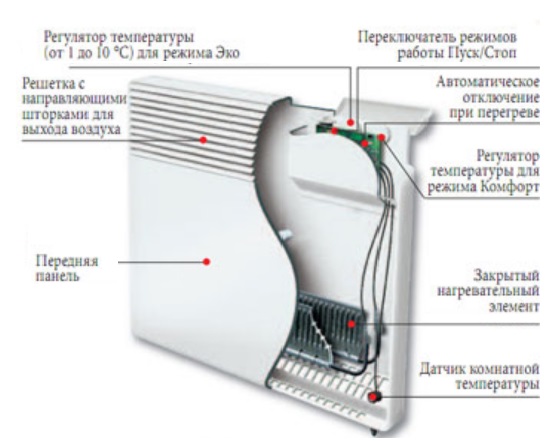
The convector’s structure includes a body, which serves as a convection chamber, and a heating element installed in the body. The air inside the body is heated by the heating element and, according to the laws of convection, moves upwards, exiting the convector through louvers at the top. Cooler air from the room takes its place from below.
The temperature of the air entering the convector is controlled by a thermostat sensor, which can turn the heating element on or off. Such a design of convectors ensures the effective operation of the heating device. Thanks to the louvers on the front panel of the convector being directed downwards and preventing the free exit of air, a slightly increased pressure is created inside the body of the convector, and then the heated air exits the convector into the room in a horizontal stream.
The heating element is fixed in the convector body in such a way that the entire device can be connected to the network without grounding. Inside the device, the heating element is mounted on heat-resistant plastic brackets that prevent contact with the body, thus eliminating the need for grounding. The entire design of the convector is developed to ensure efficient heating, even heat distribution, and comfort in the room.
Convectors in a Residential Room: What Are Their Advantages?
To decide whether an oil-filled radiator or a convector is better for you, you should understand all the benefits of using a convector. The main advantage of a convector is its eco-friendliness, safety for the health of residents and their pets, as the surfaces of the convector do not heat up more than 60 degrees Celsius, so this heating device does not dry out the air and does not burn oxygen. An electric convector meets all European standards for fire safety.
By installing a convector in each room, you provide the home with stationary heating, especially convenient in a country house, saving you from large expenses on a water heating boiler, pipe laying, and installation of steam batteries. A precise thermostat with the ability to program different modes, built into the convector, helps save electricity.
Benefits of Convection Heaters Over Oil Radiators
Convection heaters offer quick and economical heating. Due to their operating principle, convectors consume a quarter less energy than the less efficient, slow-heating oil radiators. In an oil radiator, the heating element first heats the oil to boiling, and only then does the body begin to heat up and emit heat. By the time this lengthy cycle is completed, the device consumes a lot of expensive electricity, while the room remains cold. Convectors have no preparatory stages, with the heating element immediately heating the air with maximum efficiency.
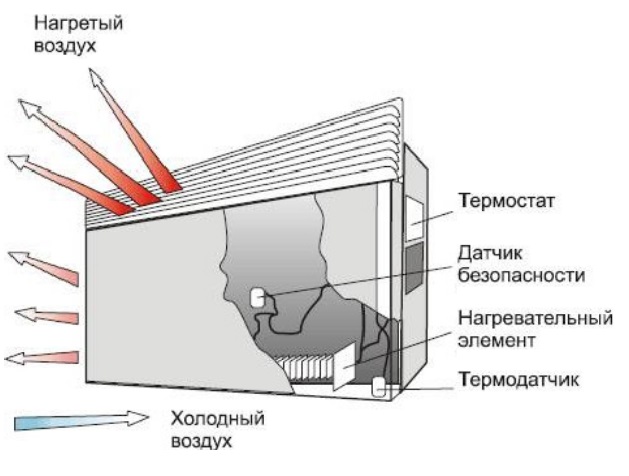
Convectors are also more environmentally friendly, with a design, heating element material, and temperature regime planned to prevent oxygen combustion, unlike oil radiators.
Convection heaters are easier to use compared to radiators (weighing 18 to 25 kg depending on the power), as they are lighter (within 10 kg) and less bulky. Whether mounted on the wall or placed on the floor, convectors are easy to move around the rooms (or roll on the included wheels).
Convection heaters are safe to use, heating the room without temperature fluctuations. The body of the convector does not heat up more than 60°C, making it burn-free. The protective devices of the convector allow it to operate without regular monitoring, unlike oil radiators, which can get very hot and pose a burn risk if touched.
The lifespan of convectors is also longer. Eventually, oil radiators can leak, leading to oil spillage, odor, and gradual device failure. Convectors are simpler in design and come with a five-year warranty, but can last more than 15 years in reality.
Technological innovations are constantly improving convectors. For example, Ballu, a heating equipment manufacturer, has developed a new monolithic-type heating element. This innovation allows the convector to work more efficiently, consuming noticeably less electricity for the same heating degree.
In conclusion, if comparing oil radiators and convectors, the latter wins in all aspects. The quality and cost ratio of modern convectors is optimal for average consumers. It’s no wonder that many manufacturers are expanding convector production, steadily reducing the output of outdated oil heaters.

